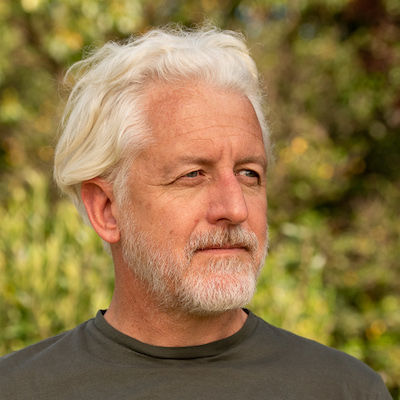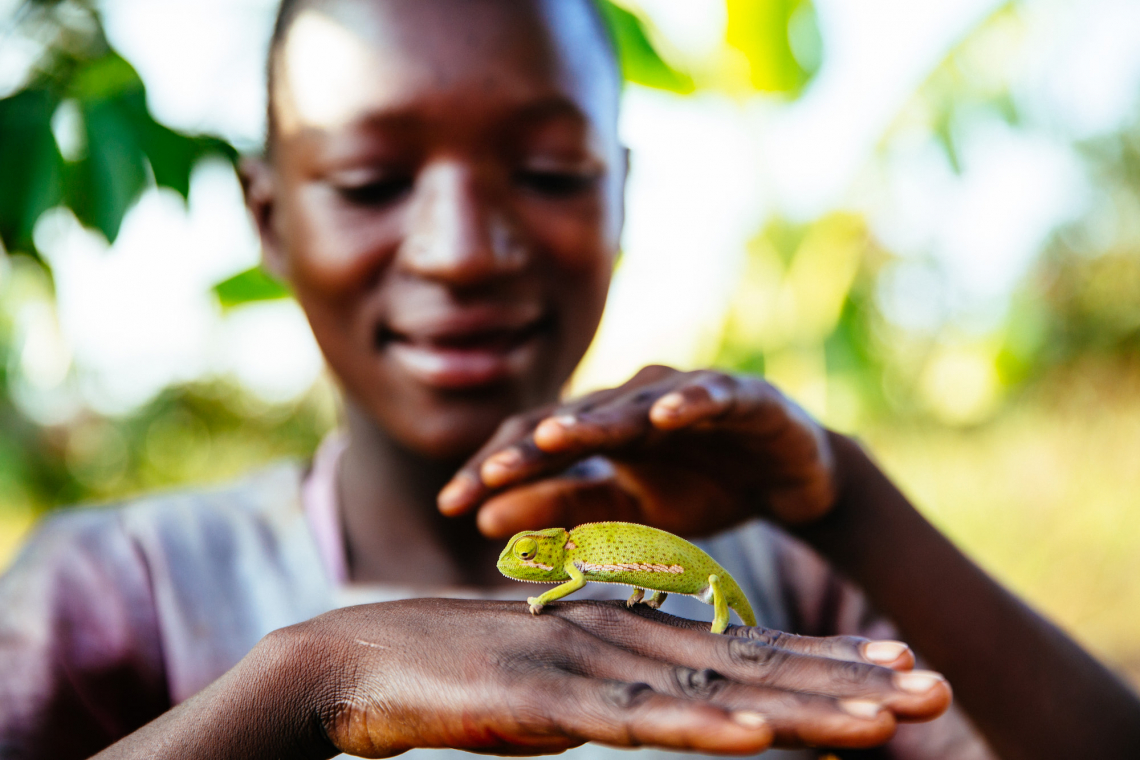The 2022 Living Planet Index report indicates an “average 69% decrease in the relative abundance of monitored wildlife populations between 1970 and 2018.”
The WWF living planet index is published every two years. This year, it gathered information from almost 32,000 populations of 5,230 species across the planet and leaves no doubt that the global plans introduced so far to curb biodiversity destruction has fallen far short of the planned goals.
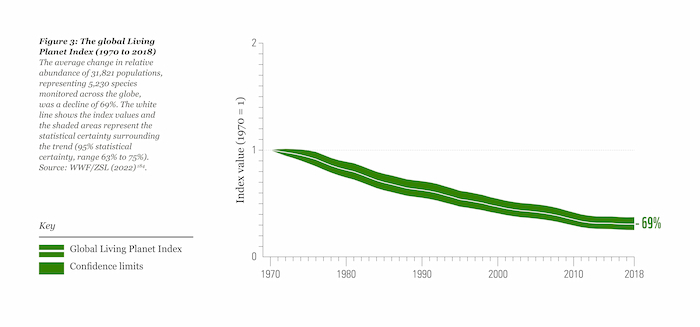
The living planet index report mainly reports on the state of wildlife globally. It does so by monitoring wildlife populations where data provides history back to 1970. This year a significant increase in data related to Brazil was added to the report providing some critical insights into the state of wildlife in the area.
The WWF living planet report is clear that land-use change is still the most significant driver for the reduction in wildlife populations. Climate change, through direct and indirect impacts, provides a very clear future threat and has already started to impact wildlife populations.
“We face the double emergencies of human-induced climate change and biodiversity loss, threatening the well-being of current and future generations. WWF is extremely worried by this new data showing a devastating fall in wildlife populations, in particular in tropical regions that are home to some of the most biodiverse landscapes in the world.” Marco Lambertini, Director General of WWF International
1. Global Human Impact
Despite 30 years of interventions by international bodies, governments and action groups, the living planet report indicates that declines in wildlife abundance are decreasing at similar levels. We must change how we have been doing things or face providing future generations with a vastly different and more environmentally hostile world. It is clear from the report that land use is still the biggest threat to biodiversity, but if we don’t keep the planet warming under 1.5oC, climate change will become the biggest threat.
The living planet report shows that the main threats to wildlife populations are “agriculture, hunting and trapping, and logging and predominantly occur in the tropics.” The areas of concern for all species and populations include the “Himalayas, Southeast Asia, the east coast of Australia, the dry forest of Madagascar, the Albertine Rift and the Eastern Arc Mountains in eastern Africa, the Guinean forests of West Africa, the Atlantic Forest, the Amazon basin and the Northern Andes into Panama and Costa Rica in South and Central America.”
Direct drivers for the declines are driven by indirect drivers, including human population increases and affluence. Sociocultural, economic, technological, institutional, and governance factors are connected to values and behaviours, which all underpin the direct drivers of declines in wildlife. An example of this is the current agrifood system which in its current form is unsustainable and not fit for purpose.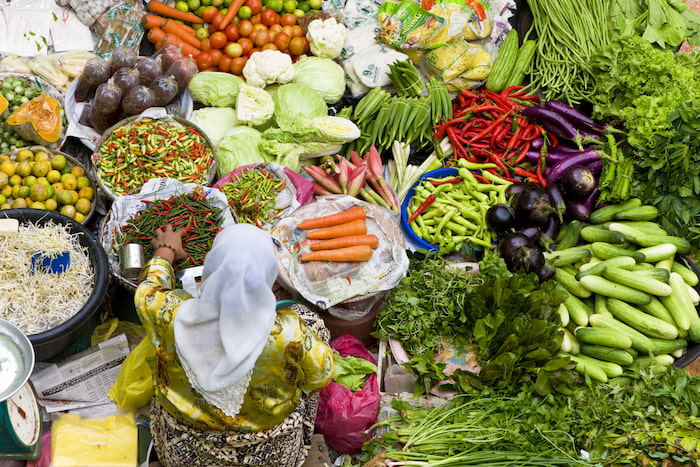
Food Market - Gavin Hellier
2. Increased Human Consumption
The world is at the point where the population will tick over to 8 billion people on our planet. The WWF living planet report indicates that the last 50 years saw the human population double, the global economy grow fourfold and global trade tenfold. This has created a significant increase in demand for energy to fuel this growth. Due to the structure of the global economy, governments, corporations and people are pursuing services and products that have market value rather than ones that do not, such as the environment and social services.
“Biodiversity loss, and the degradation of ecosystems and their services, stem from increasing demands for energy, food and other materials because of rapid economic growth, increases in population, international trade, and choices of technology, especially over the last 50 years.”
The living planet report compares the earth’s biocapacity, the ability of ecosystems to regenerate, and our human ecological footprint. To live sustainably our footprint would have to be lower than Earth’s biocapacity, currently at 1.6 global hectares per person. “Ecological Footprint accounts document that humanity overuses our planet by at least 75%, the equivalent of living off 1.75 Earths.”
3. Impact of Climate Change on Wildlife
The living planet report indicates the critical importance of keeping global warming under 1.5oC. Not keeping the global temperature driven by climate change under control will result in climate change becoming the dominant driver in biodiversity loss. The report indicates that “about 50% of warm-water corals have already been lost due to various causes. A warming of 1.5oC will result in a loss of 70-90% of warm-water corals, and a 2oC warming will result in a loss of more than 99%”. Current policies put the world on a path to a 2.5-3.5°C increase by 2100.
The living planet index indicates that “warming is also changing how ecosystems function, putting into motion ecological processes that, themselves, in time, cause more warming: this process is called a ‘positive climate feedback’. Increases in wildfires, trees dying due to drought and insect outbreaks, peatlands drying and tundra permafrost thawing all release more CO₂ as dead plant material decomposes or is burned.”
Recent studies are starting to provide direct links between adverse weather events. Bringing clarity to misunderstood links. As an example of what is to come for the future of biodiversity, the report mentions two species, their extinction linked to climate change, the golden toad and the Bramble Cay melomys. It further mentions how a single hot day in Australia killed 45,000 ‘flying fox’ bats.

Mountain gorilla - Paul Robinson
4. Ever Increasing Demand for Land
A very important take-out of the report is that “land-use change is still the biggest current threat to nature, destroying or fragmenting the natural habitats of many plant and animal species on land, in freshwater and in the sea.” The living planet report indicates that land-use change firstly “reduces overall habitat area and quality. Secondly, it also increases isolation from other habitat patches. Finally, it amplifies edge effects around the boundary of a habitat fragment, for example, by increasing the frequency of abrupt transitions from natural to altered habitats”
The UN Biodiversity Conference COP15 has the ambitious goal of protecting 30% of all terrestrial land and the ocean for wildlife. Currently, we are only protecting 14.6%. The living planet report indicates that the lack of protected land also affects the connectedness of protected areas. Today only 10% of protected areas are connected, affecting, for example, migration.
Death by a thousand cuts
The cumulative impact of human activity is apparent. The living planet report indicates, “as each decision, project and activity cuts away a little more forest, adds pollutants to the rivers and soils, and extracts more natural resources than are put back, the cumulative effects on species, ecosystems and the people that depend on them are often significant. There is growing concern that this will lead to ‘death by a thousand cuts’.”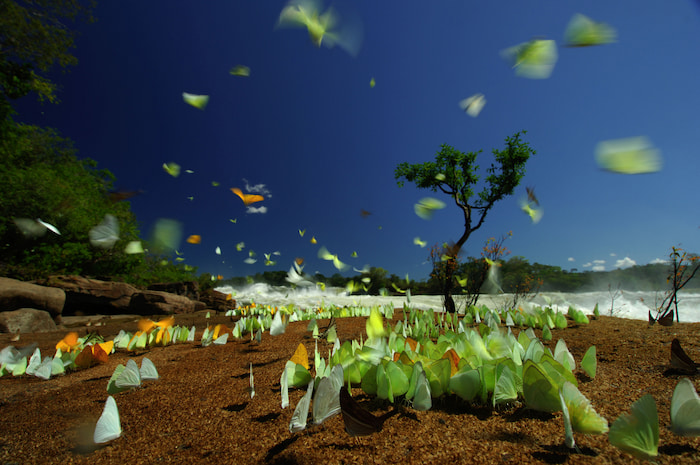
Butterflies in Amazon - Zig Koch WWF
5. Forest Destruction
The Amazon is a crucial feature of the 2022 living planet index report. The WWF Living Planet report indicates “actions are urgent because 17% of the Amazon basin has been deforested, with an additional 17% of the biome degraded. This is threatening the Amazon, a critical element in the Earth’s climate system, storing 150 to 200 billion tonnes of carbon and its biodiversity – including 18% of vascular plant species, 14% of birds, 9% of mammals, 8% of amphibians and 18% of fishes that inhabit the tropics.”
Scientists estimate the Amazon forest can only sustain limited further disturbance (between 20-25%) for it to reach critical tipping points that would affect its regeneration. In the Amazon Assessment report 2021, a call has been made to protect 80% of the Amazon. The report recommends “four key actions: (1) an immediate moratorium on deforestation and degradation in areas approaching a tipping point; (2) the achievement of zero deforestation and degradation by 2030; (3) the restoration of terrestrial and aquatic ecosystems; and (4) an inclusive and just bioeconomy of healthy forests and rivers”. Without this, the Amazon as we know it may cease to exist in 8 years.
The deforestation is not unique to the Amazon “every year we lose roughly 10 million hectares of forests – an area about the size of Portugal. So why are forests important for us humans? “Forests store more carbon than all the Earth’s exploitable oil, gas and coal and between 2001 and 2019 forests absorbed 7.6 gigatonnes of CO₂ from the atmosphere every year 5, or about 18% of all human-caused carbon emissions.”
The living planet report indicates, “deforestation, especially in the tropics, causes carbon emissions and leads to warmer, drier local climates, increasing droughts and fires and, depending on the scale, reducing rainfall and shifting global precipitation patterns. For example, clearing the tropical forests in Central Africa or South America could increase average daytime temperatures by 7-8ºC and decrease rainfall across those regions by around 15%”.
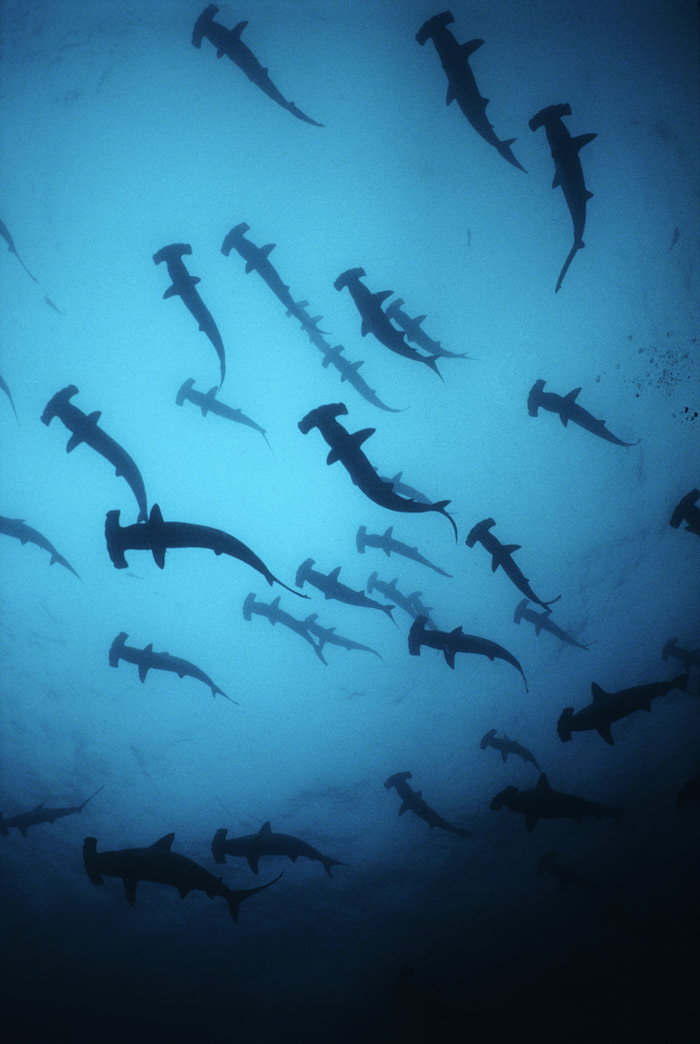
Scalloped Hammerhead Sharks - Jeff Rotman_WWF
6. Reduction in Wildlife
So after providing you with all the reasons why we are losing wildlife, I will explain the purpose of the report. “The Living Planet Index tracks the abundance of populations of mammals, birds, fish, reptiles and amphibians around the world” The 2022 Living Planet Index report indicates an “average 69% decrease in the relative abundance of monitored wildlife populations between 1970 and 2018.”
Although climate change is a critical global focus point, it is extremely important to understand the enormity of biodiversity loss globally, something quietly happening while we scramble to save our spaceship. The important word for me is AND – we can not treat the environment with an OR. Today “One million plants and animals are threatened with extinction. 1-2.5% of birds, mammals, amphibians, reptiles and fish have gone extinct; population abundances and genetic diversity have decreased, and species are losing their climatically determined habitats.”
WWF is hugely concerned about this trend, given that these geographical areas are some of the most biodiverse in the world. In particular, the LPI data reveals that between 1970 and 2018, monitored wildlife populations in Latin America and the Caribbean have dropped by 94% on average. In Africa, that figure is 66%. In less than a lifetime, monitored freshwater populations have fallen by an average of 83%, the most significant decline of any species group. Habitat loss and barriers to migration routes are responsible for about half of the threats to monitored migratory fish species.
The 2022 living planet index report focuses explicitly on sharks and rays “the global abundance of 18 of 31 oceanic sharks and rays has declined by 71% over the last 50 years. By 1980, nine of the 31 oceanic sharks and rays were threatened. By 2020, three-quarters (77%, 24 species) were threatened with an elevated risk of extinction. For example, the oceanic Whitetip Shark has declined by 95% globally over three generation lengths and has consequently moved from Vulnerable to Critically Endangered on the IUCN Red List.”
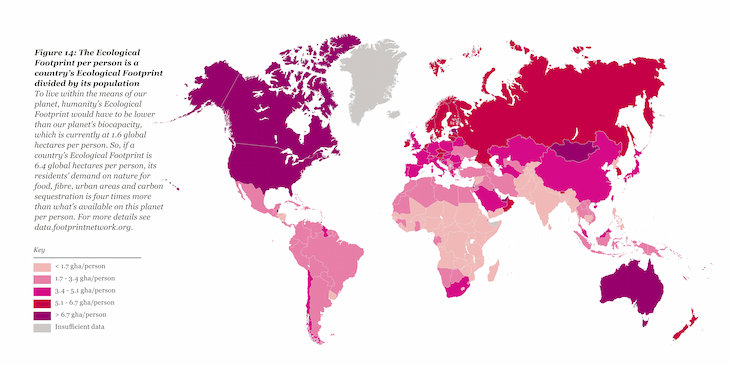
7. Inequitable Demand in Society
Although the report is about wildlife abundance it spends a lot of time highlighting the importance of people. Ultimately we are wildlife ourselves (some of us are more domesticated than others). The LPI outlines the inequity in global demand and mentions, “while industrialised countries are responsible for most environmental degradation, it is poor countries and poor people who are the most vulnerable.”
The living planet report indicates that “in 2021, close to 193 million people in 53 countries or territories experienced acute food insecurity at crisis levels or worse, an increase of nearly 40 million people compared to the previous high reached in 2020. Almost 3.1 billion people cannot afford a healthy diet, and millions of children suffer from stunting or wasting while the global obesity rate continues to grow.”
8. Indigenous Communities Matter
Some indigenous communities have a history of looking after their environment, “currently, 27% of the Amazon is occupied by Indigenous territories with the lowest rates of deforestation”. The future of nature depends on how humans value, live with and include nature in our decisions.
The report proposes an inclusive process in that “a fair and just transition will need several interventions, from the effective recognition and participation of marginalised groups in decision-making to promoting deliberation on the fair distribution of efforts and benefits.”9. Freshwater Impact
Without fresh water, there is no human race, and most of the wildlife on earth will cease to exist. The living planet index mentions that “although freshwater covers less than 1% of the planet’s surface, more than 50% of the human population lives within 3km of a freshwater body”. Besides being our lifeblood, fresh water also provides irreplaceable ecosystems. “Populations in the freshwater Living Planet Index have been hit the hardest, declining by an average of 83%.”
Freshwater systems have not escaped the human impact “Only 37% of rivers longer than 1,000km remain free-flowing over their entire length.” Freshwater fish, especially migratory species, are dependent on the connections of these freshwater systems. The living planet index indicates “freshwater migratory fish (which live in freshwater habitats either partly or exclusively) shows an average decline of 76% between 1970 and 2016.
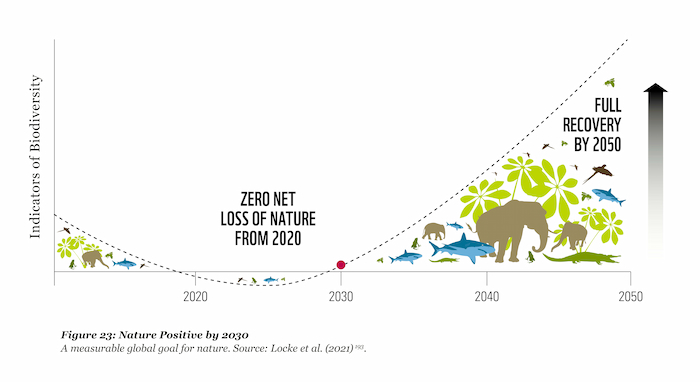
10. The Future of Wildlife
The COP 15 theme says it all. We need to be ‘nature positive by 2030’ We need to “disrupt the sectors that are drivers of nature loss – agriculture, fishing, forestry, infrastructure and extractives – driving innovation and acceleration towards sustainable production and consumption behaviours.
The living planet index report makes it clear we need “more sustainable production and consumption practices – such as sustainable increases in yield and trade, reduction of waste, and the adoption of a higher share of plant-based products in our diets – can be instrumental in limiting future land-use expansion and making space for ecosystem restoration.”
We must explore potential synergies, including “actions such as protecting remaining forests and restoring ecosystems – sometimes labelled ‘nature-based solutions’” which can be seen as “double-wins for biodiversity and the climate.”
